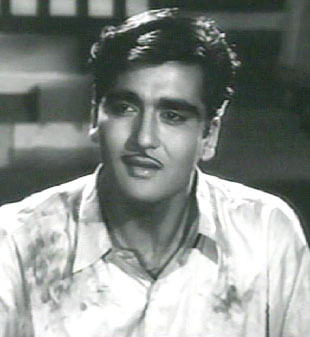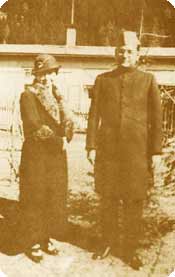For my book, I've been reading up a bit on the secularization of philosophy, which entailed some dabbling with the ideas of Isaac Newton, Blaise Pascal, Rene Descartes, and Baruch Spinoza. The road to a purely secular view of the world, it turns out, has had some interesting twists and turns. I've been particularly impressed by how much effort was exerted in the 17th century to hold onto the idea of "God"; nothing remotely similar is undertaken today.
All of the philosophers above were revolutionary mathematicians or scientists in addition to being philosophers. When they attempted to create linguistic and conceptual explanations of the world, they were also the first people to have understood certain aspects of the workings of the universe.
The best example of this might be
Isaac Newton, who was the first to offer a comprehensive mathematical explanation of the planetary orbits in our solar system. When he looked at the solar system, he was probably the first to understand the true complexity of the physics involved, and it was dazzling.
Here is what he wrote in the
Principia, in 1687:
I do not think it explicable by mere natural causes but am forced to ascribe it to ye counsel and contrivance of a voluntary agent.' A month later he wrote to Bentley again: 'Gravity may put ye planets into motion but without ye divine power it could never put them into such a Circulating motion as they have about ye Sun, and therefore, for this as well as other reasons, I am compelled to ascribe ye frame of this Systeme to an intelligent Agent.' If, for example, the earth revolved on its axis at only one hundred miles per hour instead of one thousand miles per hour, night would ten times longer and the world would be too cold to sustain life; during the long day, the heat would shrivel all the vegetation. The Being which had contrived all this so perfectly had to be a supremely intelligent Mechanick.
It's beautiful, it all runs on its own with marvelous symmetry -- it must have been designed by something or someone Intelligent.
It so happened that I was reading this the day after I had read a
piece on the pseudo-scientific movement called "Intelligent Design" in the
New Yorker, and I was struck by the similarity in the reasoning.
Intelligent Design, as many readers know (especially those who look in on the excellent
Pharyngula now and again), is a movement posing itself as an alternative theory (or set of theories) to evolution. According to Allen Orr in the article, its main scientific proponents are the biochemist Michael Behe, who wrote a book called
Darwin's Black Box, and William Dembski, a mathematician.
Behe's arguments might relate to Newton the best. He believes the sheer complexity of individual cells, even of the simplest bacteria, is dazzling. In particular, he finds the interaction of different proteins that perform essential tasks in cells -- such as building the flagellum, or tail, or a bacteria, for example -- is "irreducibly complex." That is, each of the components is dependent on others in an extremely complex interlocking framework. It seems difficult to imagine how such a system might have evolved using Darwin's principle of natural selection, and indeed, apparently evolutionary biologists cannot yet fully explain it. And here is where Behe comes in:
In Darwin’s Black Box, Behe maintained that irreducible complexity presents Darwinism with "unbridgeable chasms." How, after all, could a gradual process of incremental improvement build something like a flagellum, which needs all its parts in order to work? Scientists, he argued, must face up to the fact that "many biochemical systems cannot be built by natural selection working on mutations." In the end, Behe concluded that irreducibly complex cells arise the same way as irreducibly complex mousetraps—someone designs them. As he put it in a recent Times Op-Ed piece: "If it looks, walks, and quacks like a duck, then, absent compelling evidence to the contrary, we have warrant to conclude it’s a duck. Design should not be overlooked simply because it’s so obvious." In Darwin’s Black Box, Behe speculated that the designer might have assembled the first cell, essentially solving the problem of irreducible complexity, after which evolution might well have proceeded by more or less conventional means. Under Behe’s brand of creationism, you might still be an ape that evolved on the African savanna; it’s just that your cells harbor micro-machines engineered by an unnamed intelligence some four billion years ago.
There are, of course numerous very serious problems with this line of thought, and almost no professional scientists accept the "irreducible complexity" argument. I won't get into that here (read the article). Rather, what's interesting to me is that Behe's invocation of an "intelligence" is in response to a discovery every bit as dazzling as Newton's. There is an elegance to the workings of the natural world that, for these two men in very different eras and circumstances, seems impossible to accept as a purely unmotivated, random event.
The comparison ends there. Unlike Newton, Behe didn't discover anything in particular. And the complexity of proteins in cells has been known for several decades -- it's even taught in high school -- so it's hardly dazzling in the same way as the physics of the solar system must have been for Newton.
But most importantly, Newton's rationalization was part of a sweeping movement towards secularization that would soon see the idea of God considerably diminished in Philosophy. Within 60 years of Newton's invocation of a kind of Deist God in the
Principia (i.e., who sets the machine in motion), there would be Denis Diderot in France, shrugging his shoulders: whether or not God does what Newton says he does doesn't matter to us, since the day-to-day workings of the world operate without divine intervention. Newton's "Intelligent Mechanick" God was not one to inspire fear and trembling, but rather a kind of cerebral -- and
voluntary -- appreciation.
In contrast, the Intelligent Design of Behe and Dembski is in support of a belief in God that, for these scientists, resides in an emotional fundament that always trumps the scientific project.
The comparison, in the end, is small, but perhaps it is still worth considering. How do we explain the advent of dazzling complexity in the natural world? Do we depend on our own intelligence to decipher and describe the world, or do we posit the existence of of an Intelligent designer, who made it? I prefer the former, but I can understand how some smart people might not, under the right circumstances.


